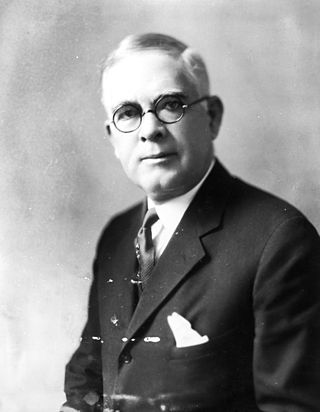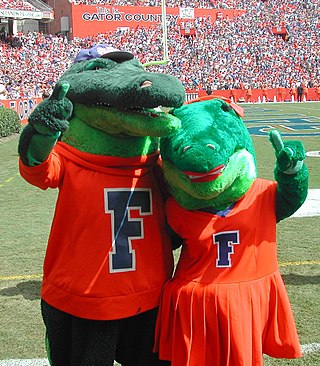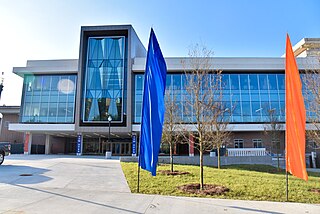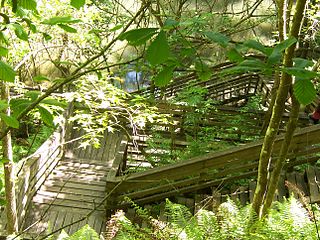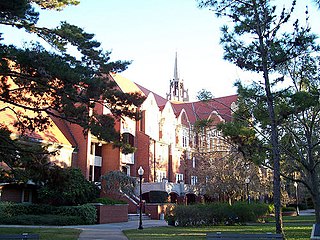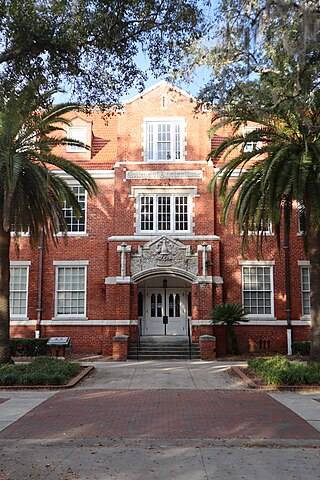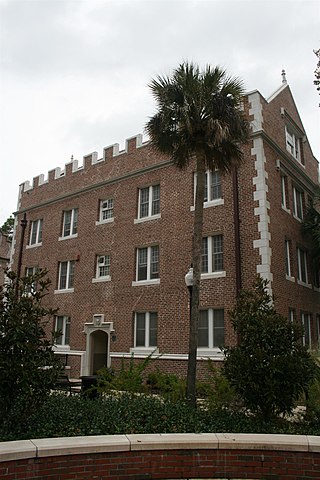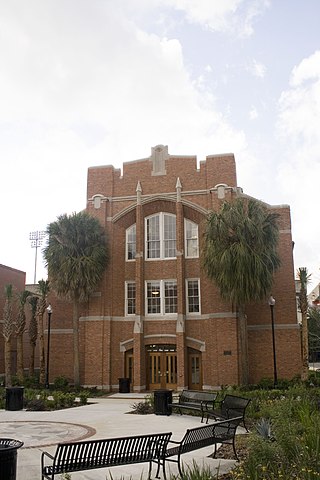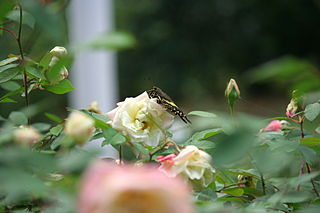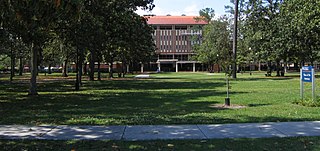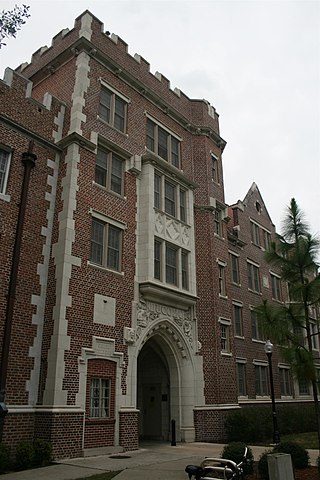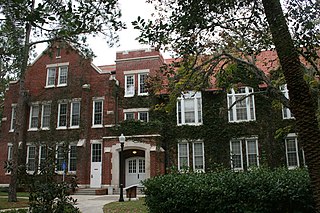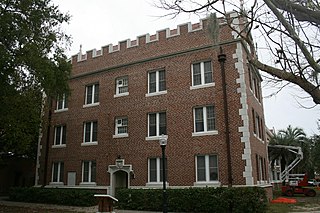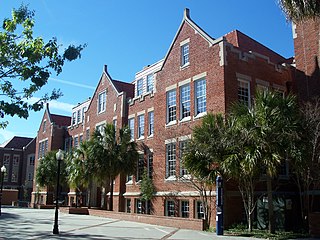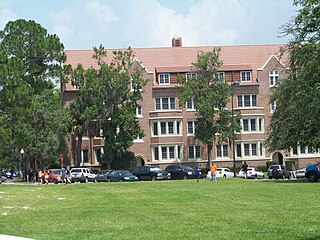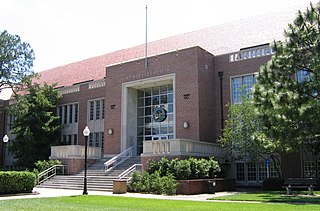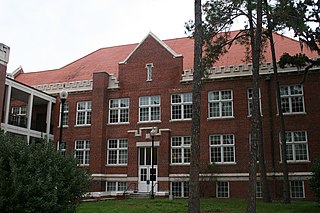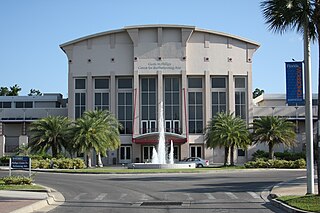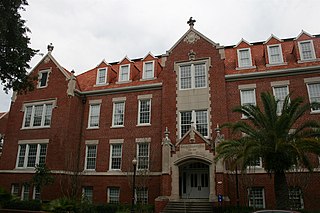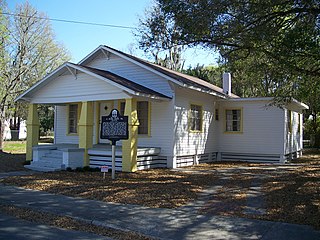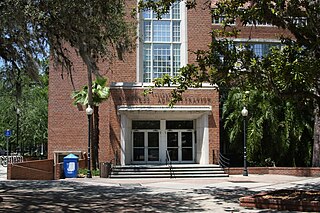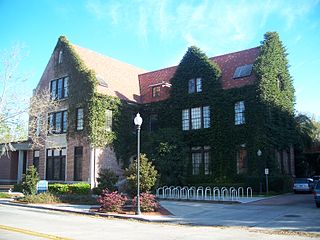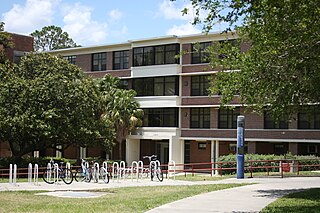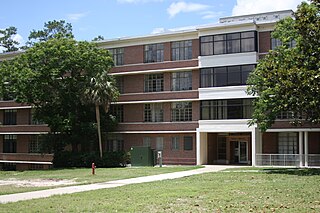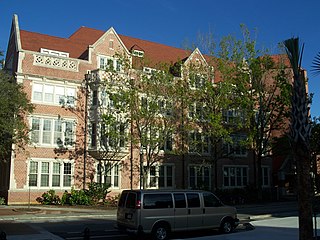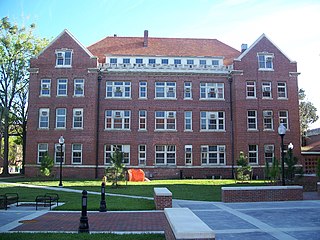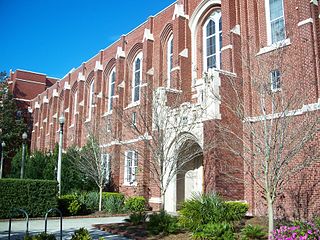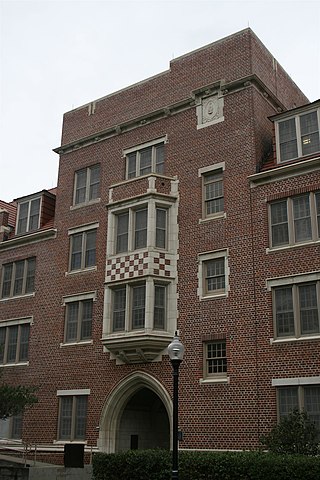36 Sights in Gainesville, United States (with Map and Images)
Legend
Welcome to your journey through the most beautiful sights in Gainesville, United States! Whether you want to discover the city's historical treasures or experience its modern highlights, you'll find everything your heart desires here. Be inspired by our selection and plan your unforgettable adventure in Gainesville. Dive into the diversity of this fascinating city and discover everything it has to offer.
Sightseeing Tours in GainesvilleActivities in Gainesville1. Ring of Honor
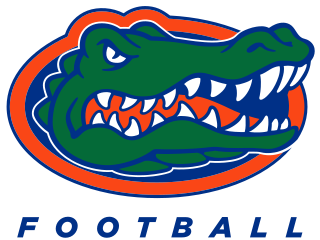
The Florida Gators football program represents the University of Florida (UF) in American college football. Florida competes in the Football Bowl Subdivision (FBS) of the National Collegiate Athletic Association (NCAA) and the Southeastern Conference (SEC) They play their home games on Steve Spurrier-Florida Field at Ben Hill Griffin Stadium on the university's Gainesville campus.
2. Tim Tebow (2007)
Timothy Richard Tebow is an American former professional football quarterback who played in the National Football League (NFL) for three seasons, primarily with the Denver Broncos. Tebow played college football for the Florida Gators, where he became the first underclassman to win the Heisman Trophy and helped lead the team to two BCS National Championship titles in 2006 and 2008. At the conclusion of his collegiate career, he held the Southeastern Conference's records for career passing efficiency and rushing touchdowns. He was selected by the Broncos in the first round of the 2010 NFL draft.
3. Steve Spurrier (1966)
Stephen Orr Spurrier is an American former football player and coach. He played ten seasons in the National Football League (NFL) before coaching for 38 years, primarily in college. He is often referred to by his nickname, "the Head Ball Coach". He played college football as a quarterback for the Florida Gators, where he won the 1966 Heisman Trophy. The San Francisco 49ers selected him in the first round of the 1967 NFL draft, and he spent a decade playing in the National Football League (NFL) mainly as a backup quarterback and punter. Spurrier was inducted into the College Football Hall of Fame as a player in 1986.
4. Ben Hill Griffin Stadium
Ben Hill Griffin Stadium, popularly known as "The Swamp", is a football stadium in Gainesville, Florida, United States. It is located on the campus of the University of Florida and is the home field of the Florida Gators football team. It was originally known as Florida Field when it opened as a 22,000-seat facility in 1930, and it has been expanded and renovated many times over the ensuing decades. Most of the university's athletic administrative offices, along with most football-related offices and training areas, have been located in the stadium since the 1960s. Most of the football program's facilities are slated to move to a nearby $60 million building that began construction in 2020.
5. Dove World Outreach Center
Dove World Outreach Center was a 50-member non-denominational charismatic Christian church led by pastor Terry Jones and his wife, Sylvia. After spending more than 25 years in Gainesville, Florida, the church sold its 20 acres of property in July 2013 with plans to relocate to Tampa. The church first gained notice during the late 2000s for its public displays and criticism of Islam and gay people, and was designated as a hate group by the Southern Poverty Law Center. It became widely known for its pastor's controversial plan to burn Qur'ans on the ninth anniversary of the September 11 attacks.
6. Danny Wuerffel (1996)
Daniel Carl Wuerffel is an American former professional football quarterback who played in the National Football League (NFL). He played college football for the Florida Gators, where he was a prolific passer under head coach Steve Spurrier. Wuerffel led the NCAA in touchdown passes in 1995 and 1996 and set numerous school and conference records during his career. During his senior year in 1996, he won the Heisman Trophy while leading the Gators to their first national championship. In 2013, he was inducted into the College Football Hall of Fame.
7. Albert A. Murphree
Albert Alexander Murphree was an American college professor and university president. Murphree was a native of Alabama, and became a mathematics instructor after earning his bachelor's degree. He later served as the third president of Florida State College from 1897 to 1909, and the second president of the University of Florida from 1909 to 1927. Murphree is the only person to have been the president of both of Florida's original state universities, the University of Florida and Florida State University, and he played an important role in the organization, growth and ultimate success of both institutions.
8. Florida Museum of Natural History

The Florida Museum of Natural History (FLMNH) is Florida's official state-sponsored and chartered natural history museum. Its main facilities are located at 3215 Hull Road on the campus of the University of Florida in Gainesville.
9. Albert & Alberta
Albert Gator and Alberta Gator are the official mascots of the University of Florida in Gainesville, Florida. Costumed in plush, Albert and Alberta are Florida representations of American alligators, which are commonly found throughout the state of Florida.
10. J. Wayne Reitz Union
The J. Wayne Reitz Union is the student union of the University of Florida, located on Museum Road on the university campus in Gainesville, Florida, United States. The union was named in honor of J. Wayne Reitz, the fifth president of the university, who served from 1955 to 1967. The building, which was originally completed in 1967, contains dining facilities, meeting rooms, offices, a computer lab, a game room, an outdoor amphitheater, retail stores, a movie theater and a hotel.
11. Devil's Millhopper Geological State Park
Devil's Millhopper Geological State Park is a Florida state park located in the north-westernmost part of Gainesville, Florida, off County Road 232, also known as NW 53rd Avenue and Millhopper Road, northwest of the University of Florida.
Wikipedia: Devil's Millhopper Geological State Park (EN), Website
12. 34th Street Wall
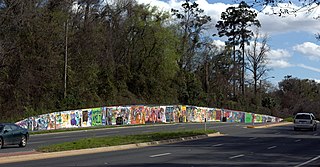
The 34th Street Wall is a 1,120-foot-long retaining wall along SW 34th Street in Gainesville, Florida. It was constructed in 1979 by the Florida Department of Transportation to prevent erosion on the adjoining University of Florida golf course when the road was widened from two to four lanes, necessitating cutting through a small hill.
13. University Auditorium
The University Auditorium, occasionally known as the Memorial Auditorium and sometimes called the University of Florida Auditorium, is a historic building on the campus of the University of Florida in Gainesville, Florida, in the United States. It was designed by William Augustus Edwards in the Collegiate Gothic style and was built between 1922-1924. It was restored and expanded in 1977 by architect James McGinley. The expansion, which added new entrances, lobbies and stage dressing rooms along with air-conditioning, was designed to complement but not match the original architecture. It is a contributing property in the University of Florida Campus Historic District which was added to the National Register of Historic Places on April 20, 1989. On April 18, 2012, the AIA's Florida Chapter placed University Auditorium on its list of Florida Architecture: 100 Years. 100 Places.
Wikipedia: University Auditorium (Gainesville, Florida) (EN), Heritage Website
14. Griffin-Floyd Hall
Griffin–Floyd Hall is a historic academic building located on the northeastern portion of the University of Florida campus in Gainesville, Florida. On June 27, 1979, it was added to the U.S. National Register of Historic Places. It currently houses the Department of Philosophy and Department of Statistics.
15. Buckman Hall
Buckman Hall is a historic building located in Murphree Area on the University of Florida campus in Gainesville, Florida, United States. It was designed by architect William A. Edwards in the Collegiate Gothic style and opened in 1906 as one of the two original buildings on the University of Florida's Gainesville campus along with nearby Thomas Hall. It once was a multi-purpose facility but has been used exclusively as a student dormitory since the 1940s.
Wikipedia: Buckman Hall (Gainesville, Florida) (EN), Website, Heritage Website
16. Ustler Hall
Kathryn Chicone Ustler Hall is a historic building on the campus of the University of Florida (UF) in Gainesville, Florida. It was designed by William Augustus Edwards in the Collegiate Gothic style and opened in 1919 as the University Gymnasium. In that capacity, the building was the first home of the Florida Gators men's basketball team, and it continued to serve as the home court for most of the university's indoor sports programs until the Florida Gymnasium opened in the late 1940s. The university became co-educational at about the same time, and the building was rechristened the Women's Gymnasium and was repurposed as a recreation center for the school's many new female students. On June 27, 1979, it was added to the U.S. National Register of Historic Places.
17. Kanapaha Botanical Gardens
The Kanapaha Botanical Gardens is a botanical garden in Gainesville, Florida, operated by the North Florida Botanical Society. The name for the garden comes from the nearby 250-acre Lake Kanapaha. "Kanapaha" originating from two Timucua words for "palmetto leaves" and "house". The gardens were established in 1978 when the society leased 33 acres for a public botanical garden. Another 29 acres were added in 1982. The gardens opened to the public in 1986.
18. Plaza of the Americas
The Plaza of the Americas is a major center of student activity on the campus of the University of Florida in Gainesville, Florida. It is located in the quad between Library West, Peabody Hall, the University Auditorium, and the Chemistry Building.
Wikipedia: Plaza of the Americas (Gainesville, Florida) (EN)
19. Sledd Hall
Sledd Hall is an historic student residence building in Murphree Area on the northern edge of the University of Florida campus in Gainesville, Florida. Built in 1929, the dormitory was designed by architect Rudolph Weaver in the Collegiate Gothic style. It is a contributing property in the University of Florida Campus Historic District.
20. Bryan Hall
Bryan Hall is a historic building in Gainesville, Florida, United States. It is in the northeastern section of the University of Florida in Gainesville. On June 27, 1979, it was added to the U.S. National Register of Historic Places. Bryan Hall is part of the Warrington College of Business. The building also was home to the College of Law from 1914 to 1969.
Wikipedia: Bryan Hall (Gainesville, Florida) (EN), Heritage Website
21. Thomas Hall
Thomas Hall, built in 1905, is a historic building located in Murphree Area on the campus of the University of Florida in Gainesville, Florida, United States. The building is named for William Reuben Thomas, the Gainesville mayor and businessman responsible for bringing the University of Florida to Gainesville.
Wikipedia: Thomas Hall (Gainesville, Florida) (EN), Website, Heritage Website
22. Anderson Hall
Anderson Hall is a historic building located in the northeastern section of the University of Florida campus in Gainesville, Florida. The building houses the university's political science and religion departments, both a part of the College of Liberal Arts and Sciences. Anderson Hall was designed by William Augustus Edwards, responsible for planning nearly all of the campus' early buildings, in Collegiate Gothic style. Construction began in 1912, and the building opened in October 1913 as Language Hall.
Wikipedia: Anderson Hall (Gainesville, Florida) (EN), Design Website, Heritage Website
23. Murphree Hall
Murphree Hall is a historic student residence building located in the Murphree Area on the northern edge of the University of Florida campus in Gainesville, Florida. It was designed by architect Rudolph Weaver in the Collegiate Gothic style and completed in 1939. The building was named for Albert A. Murphree, the university's second president, who served from 1909 to 1927. Major renovations, which included adding air conditioning, were completed in 2005, and the hall was rededicated and open for that fall semester.
24. Tigert Hall
Tigert Hall, built in the late 1940s and early 1950s, is a historic administrative building located on the eastern edge of the University of Florida campus in Gainesville, Florida. It was designed by architect Jefferson Hamilton in a modified Collegiate Gothic style to function as the university's main administration building. In 1960, it was renamed for John J. Tigert, the university's third president, who served from 1928 to 1947. Tigert Hall faces S.W. Thirteenth Street, one of the major public roads adjoining the university's campus.
25. Keene-Flint Hall
Keene-Flint Hall is a historic site in Gainesville, Florida, United States. It is located in the northeastern section of the University of Florida. On June 27, 1979, it was added to the U.S. National Register of Historic Places. Keene-Flint Hall houses the University of Florida's History Department.
Wikipedia: Flint Hall (Gainesville, Florida) (EN), Design Website
26. Phillips Center for the Performing Arts
The Curtis M. Phillips Center for the Performing Arts is a performing arts theatre in Gainesville, Florida, United States. It is located on the western side of the University of Florida campus. This facility presents some of the most established and emerging national and international artists on the main stage. In all, the Phillips Center consists of a 1,700-seat proscenium hall and a 200-seat Black Box Theatre. In 2000, retired Jacksonville surgeon Curtis M. Phillips provided The Barbara J. and Curtis M. Phillips M.D. Endowment Fund to name the performing arts center.
Wikipedia: Curtis M. Phillips Center for the Performing Arts (EN), Website
27. Peabody Hall
Peabody Hall is a historic site in Gainesville, Florida, United States. It is located in the northeastern section of the University of Florida. On June 27, 1979, it was added to the U.S. National Register of Historic Places. It currently houses the Dean of Students Office and the Counseling Center at the university.
Wikipedia: Peabody Hall (Gainesville, Florida) (EN), Heritage Website
28. A. Quinn Jones House
The A. Quinn Jones Museum and Cultural Center is a museum in Gainesville, Florida. The museum preserves the legacy of Allen Quin Jones (1893–1994), a local educator who dedicated his life to educating African-Americans.
29. Matherly Hall
Matherly Hall built in the early 1950s is an historic classroom and faculty office building on the campus of the University of Florida in Gainesville, Florida, in the United States. It was designed by Guy Fulton in a modified Collegiate Gothic style to house the College of Business Administration. It is named for Walter Jeffries Matherly, dean of the business college from 1926 to 1954.
30. Walker Hall
Walker Hall, originally known as the Mechanical Engineering Building, is an historic classroom building on the campus of the University of Florida in Gainesville, Florida, in the United States. It was designed by Rudolph Weaver in the Collegiate Gothic style and was built in 1927 It was later named for Col. Edgar S. Walker, a civil engineering professor.
Wikipedia: Walker Hall (Gainesville, Florida) (EN), Heritage Website
31. North Hall
North Hall built in 1950 is a historic building on the campus of the University of Florida in Gainesville, Florida, in the United States. It was designed by Guy Fulton in a modified Collegiate Gothic style to provide housing for the student body.
32. Riker Hall
Riker Hall built in 1950 is a historic building on the campus of the University of Florida in Gainesville, Florida, in the United States. It was designed by Guy Fulton in a modified Collegiate Gothic style to provide housing for the student body. Known as South Hall for the first five decades of existence, it was named for Harold C. Riker in 2000.
33. Rolfs Hall
Rolfs Hall is an historic building on the campus of the University of Florida in Gainesville, Florida, United States. It is located in the northeastern section of the campus. It was designed in the Collegiate Gothic style by William Augustus Edwards and completed by Rudolph Weaver, who succeeded him as architect for the Florida Board of Control. On September 11, 1986, it was added to the U.S. National Register of Historic Places. Rolfs Hall is named for Peter Henry Rolfs, who was dean of the College of Agriculture from 1915 to 1920.
Wikipedia: Rolfs Hall (Gainesville, Florida) (EN), Heritage Website
34. Newell Hall
Newell Hall is a historic site in Gainesville, Florida, United States. It is located in the northeastern section of the University of Florida. On June 27, 1979, it was added to the U.S. National Register of Historic Places. Formerly home to the Department of Soil and Water Science, the building is currently used as a 24/7 study space for university students to collaborate.
Wikipedia: Newell Hall (Gainesville, Florida) (EN), Website, Heritage Website
35. Smathers Library
Smathers Library is a historic library in Gainesville, Florida, United States. It is located in the northeastern section of the University of Florida in the middle of the Campus Historic District. When it was first created it was the largest building on campus at that time. It is a part of the George A. Smathers Libraries system and home to multiple collections of books and other library materials.
Wikipedia: Library East (Gainesville, Florida) (EN), Website, Heritage Website
36. Fletcher Hall
Fletcher Hall, originally called North Hall, is a historic dormitory building on the campus of the University of Florida in Gainesville, Florida, United States. It makes up half of the "F" in the "U.F." in the Murphee Area. The "U.F" in the building design can be seen from an aerial view. It was designed by Rudolph Weaver in the Collegiate Gothic style, was built in 1938 and was named for Duncan U. Fletcher, longtime U.S. Senator from Florida. It was renovated in 1984.
Wikipedia: Fletcher Hall (Gainesville, Florida) (EN), Website, Heritage Website
Share
How likely are you to recommend us?
Disclaimer Please be aware of your surroundings and do not enter private property. We are not liable for any damages that occur during the tours.
.jpg)
.jpg)
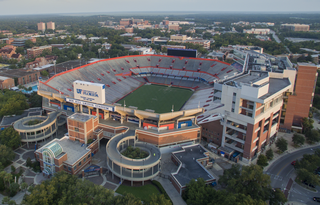
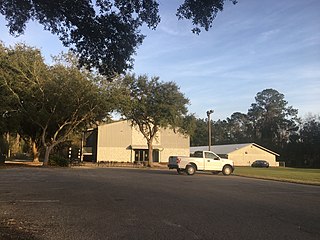
.png)
